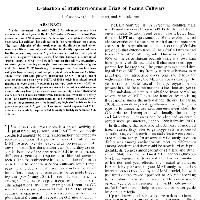Resumen
- Multienvironment yield trials (MET) for advanced peanut lines are conducted each year at the EEA-Manfredi Peanut Breeding Program, the main INTA program for developing new peanut (Arachis hypogaea L.) cultivars for cultivation in the Argentinean crop area. The main objective of this work was the simultaneous analysis of several multienvironment yield tests first to identify superior cultivars for the peanut crop area in Argentina, and second to investigate if different megaenvironments exist. The simultaneous evaluation of several years of MET provides information that allows researchers to better guide breeding strategies. We analyze a 6-yr series of grain yield data from MET, involving 18 genotypes and five test locations using six by-year analyses of complete yield data sets and an Additive Main Effect and Multiplicative Interaction (AMMI) mixed model analysis combining all 6 yr of MET. AMMI models in a mixed model framework were used for exploring genotype-environment (GE) interaction since the lists of genotypes annually tested in multienvironment trials vary from year to year since new genotypes are introduced every year and others are withdrawn. The results allowed us to identify mf484 and mf505 as superior cultivars and confirm the existence of a unique megaenvironment for identifying high yield cultivars in the peanut crop area of Argentina. The mixed model approach of MET data was successfully implemented to analyze highly unbalanced GE data sets.
